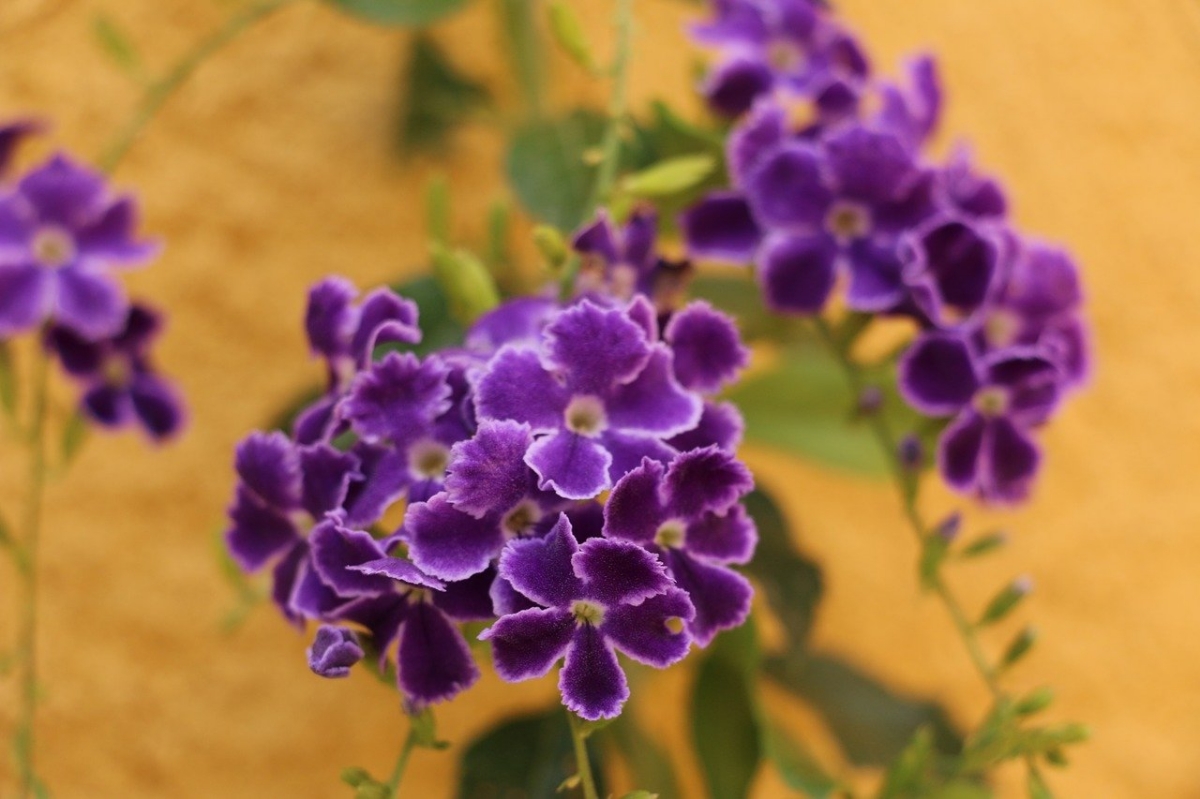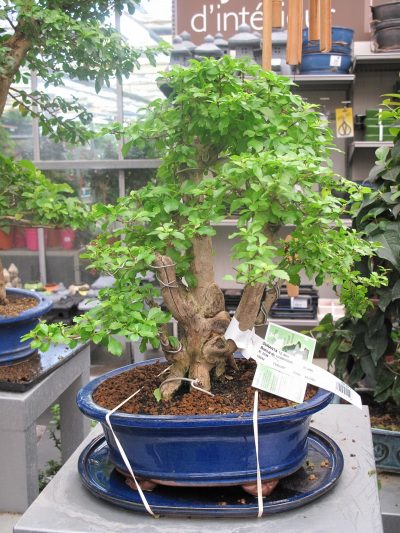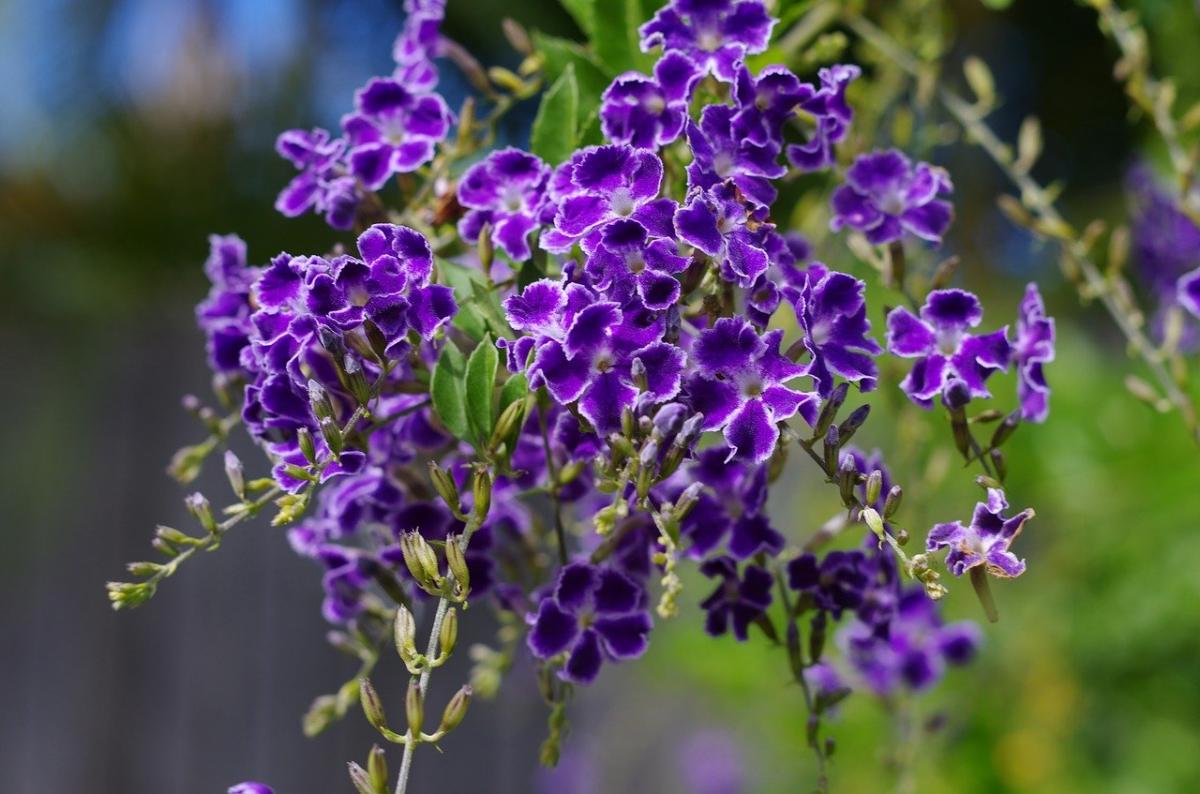
Duranta is a genus of shrubby plants that is often used as a hedge or barrier, but they are also beautiful if they are kept as isolated shrubs or grown in a pot. The reason? The clusters of lilac, blue or white flowers that sprout at the end of the branches, and that make any garden, terrace or patio look much prettier than it is.
Now, it is important to know how to take care of it so that it grows well And, incidentally, avoid or at least reduce the risk of having pests that can weaken it.
Origin and characteristics of Duranta
The Duranta is a genus of evergreen shrubs or trees that grow in America, from southern Florida to northern Argentina. It is estimated that there are 32 different species which measure between 2 and 8 meters. Its leaves have an obovate-spatulate or elliptical shape, and are between 3 and 7 centimeters long by 1 to 3 centimeters wide.. These have the margin that is generally entire, but may be slightly serrated.
Its flowers arise in terminal clusters (that is, after flowering they dry out), and are between 5 and 20 centimeters long. The fruits are small drupes that contain about eight seeds.
Types of Duranta
Duranta are plants that have very beautiful flowers, and also do not require much care as we will see later. For this reason, it is very interesting to grow some in the garden or in a patio, since regardless of the experience we have caring for plants, it will be very easy for them to last us for many years. In addition, they tolerate pruning very well, so much so that they are often worked as bonsai.
So let's look at some Duranta species to find out which one to choose:
duringanta mutisii
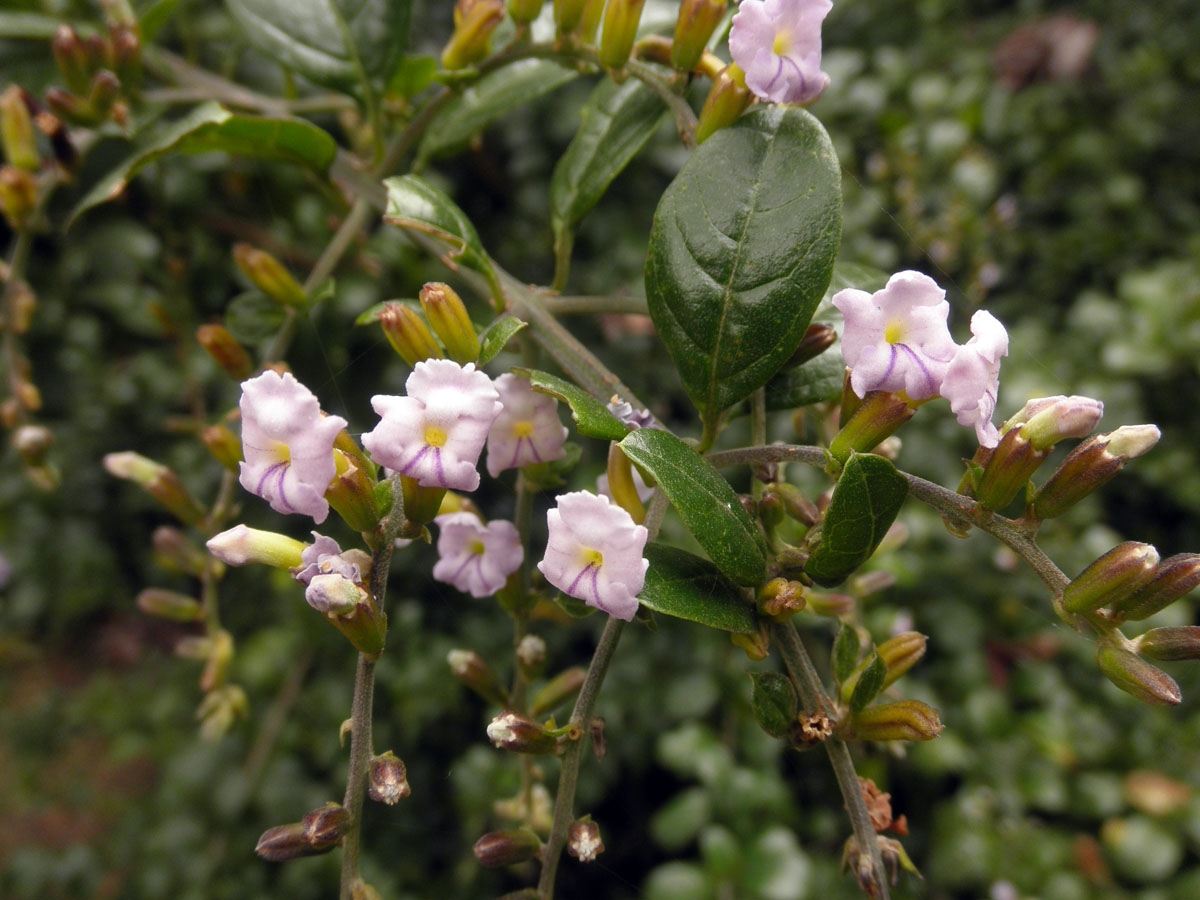
Image - http://www.phytoimages.siu.edu/
La duringanta mutisii, known as hawthorn, is a tree that reaches a height of 8 meters, and that it has a dense crown with smooth and leathery green leaves. The flowers are light blue in color, and are grouped in clusters. They are yellow, round, and measure about 4 centimeters in diameter.
during repens
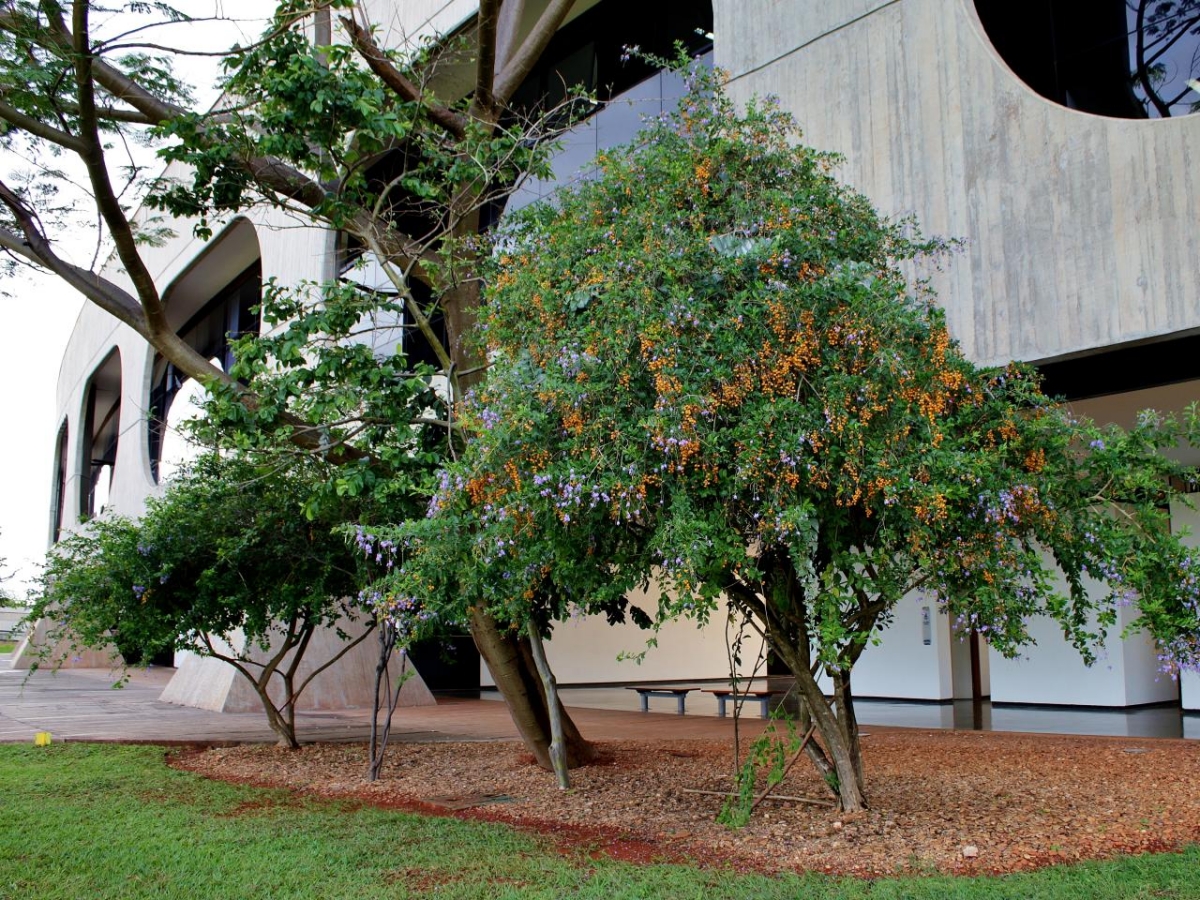
Image - Flickr / Mauricio Mercadante // La during repens it is the plant that is further to the right.
La during repens, before call erect y Duranta Dombeyana, it is a 2-4 meter tall shrub that, sometimes, it has thorns but that the normal thing is that it does not have them. It produces lilac flowers with a white center, and orange drupes that become the size of a cherry.
Variegated duranta
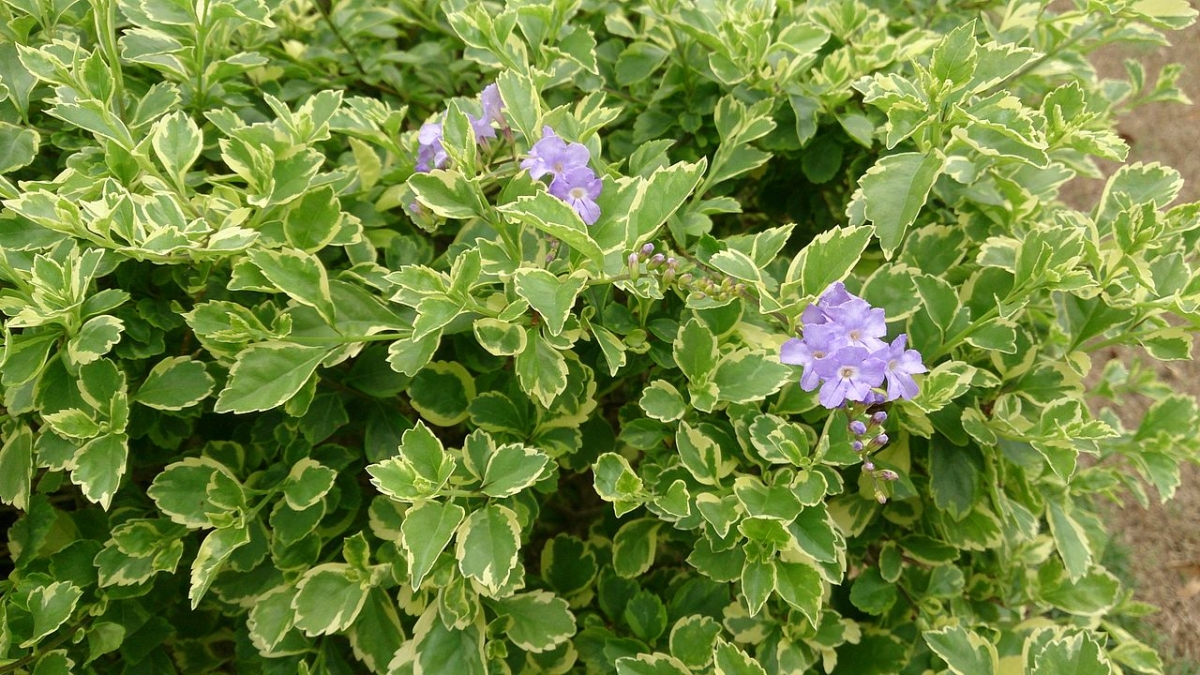
Image - Wikimedia / Mokkie
With that name it is called a duranta that has green leaves with a yellow margin. In addition, the margins of these are usually toothed.
Duranta's most popular cultivars
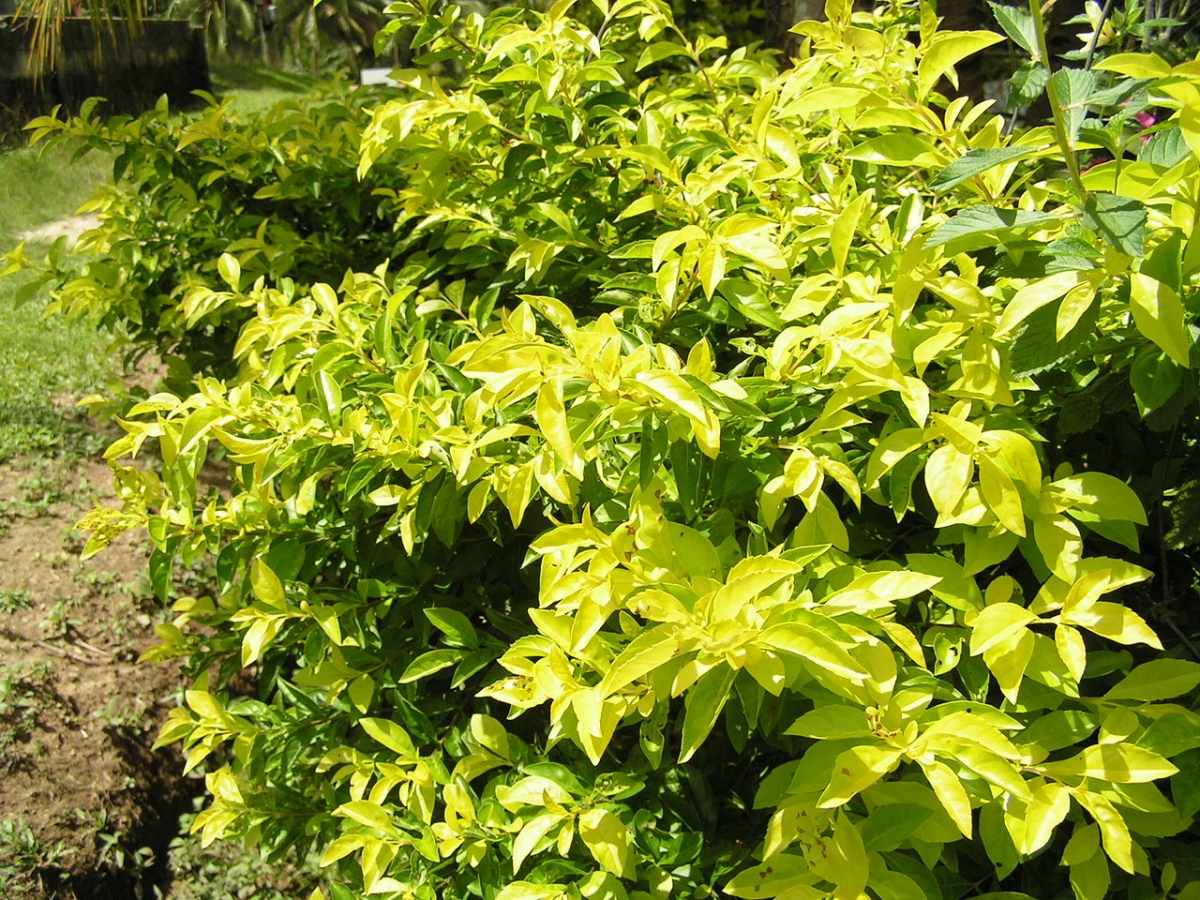
Image - Wikimedia / pinay06
There are two cultivars that are very popular in gardens, and they are:
- Duranta 'Golden': It has green leaves with a yellow margin.
- Duranta 'Lemon': that it has them yellow.
With any of them you can get a spectacular hedge.
How is the Duranta cared for?
The Duranta is a plant that will beautify our garden, patio or terrace as long as it receives some basic care, which are the following:
Location
If we want it to flourish and be healthy, just buy it we have to leave it outside. It is important that it is in a place where the sun's rays reach it directly.
In addition, If we are going to plant it in the ground, we will do it at a minimum distance of one meter from walls or walls so that their branches do not rub against them as they grow.
Earth
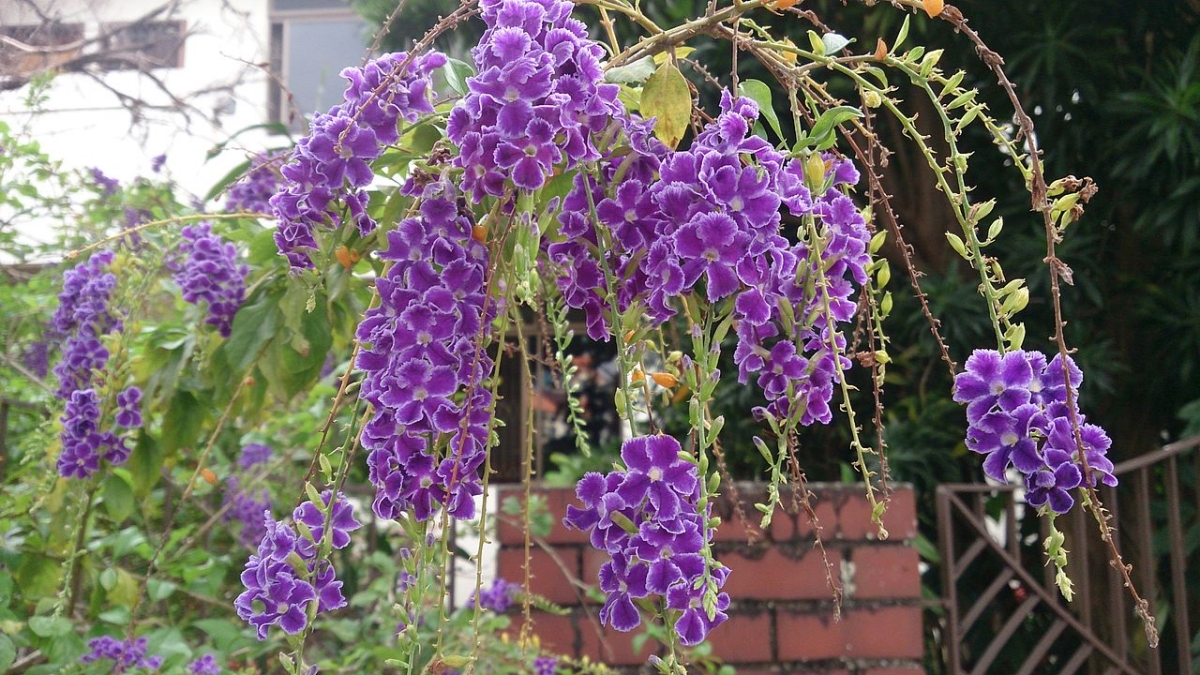
Image - Wikimedia / Mokkie
It is not a very demanding plant, but yes you have to know that it grows best in fertile soils, as long as they are not easily flooded. If it is going to be in a pot, we can plant it in one with a universal growing substrate such as this.
Irrigation
When to water the duranta? Usually, it should be watered an average of 3 times a week in summer. It does not resist drought, but even less excess water, so with irrigation it will always be better to fall short than go too far. Of course, during the cold months you have to let more time pass between one watering and the next, since the soil takes longer to dry.
Likewise, it is just as important to know how often to water as how to do it, and that is that if, for example, we pour a glass of water every time, it will surely not be of much use. That's why, we have to pour water into it until the substrate or soil is thoroughly soaked, depending on whether it is potted or planted in the ground.
Subscriber
We can pay duranta for the duration of spring and summer, for example with earthworm humus or cow dung, adding a handful. If it is in a pot, we will use fertilizers or liquid fertilizers, such as this, and we will follow the indications that we will find on the product packaging.
With the arrival of the autumn cold we will have to suspend the subscriber until next year.
Plantation
Whether we want to plant it in the garden, or if you need a larger pot, we are going to transplant it in spring. But yes: you have to wait until it has rooted well, something that we will know for sure when we see that the roots are already growing outside the pot in which it is.
Multiplication
It multiplies by seeds and also by semi-woody cuttings in spring. Let's know how to do it:
- Seeds: they can be sown in yogurt cups that we will have made a small hole with a pair of scissors or a knife. We just have to clean them well with water, dry them, fill them with universal substrate (for sale here) or for seedbeds (for sale here) and irrigate. Then we will put a maximum of two seeds in each container, and bury them a little. If we put them in a sunny place, they will germinate in a matter of days.
- Cuttings: to multiply the duranta by cuttings, what you have to do is cut a semi-woody branch, impregnate the base with powdered rooting hormones (for sale here), and then plant it (do not nail it) in a pot with a substrate that is light and that drains water well, such as coconut fiber (on sale here) that you will have previously watered. In about two weeks it will start to root.
Pruning
There are two types of pruning that we will have to do:
- Maintenance: consists of trimming the branches that are growing a lot. Since green and therefore tender parts are removed, it can be done throughout the year, as they heal quickly.
- Training: branches, woody or not, that are giving it a "tangled" look are removed. Those that are dry and broken must also be removed. This is done at the end of winter.
Pests
It's very sturdy, but can be attacked by aphids, whiteflies, mites and mealybugs especially when the summer is very hot and dry. But don't worry: they can be eliminated with ecological insecticides, such as diatomaceous earth (for sale here), of which I leave you a video:
Rusticity
Duranta is sensitive to cold. The most common, erect o repentYes, it can withstand very mild frosts of up to -2ºC, but it is preferable that it is not without protection if it drops below 0 degrees. But don't worry, you can have it in a home greenhouse or inside the house.
Duranta bonsai maintenance
As we have anticipated before, the duranta is a plant that is sometimes worked as a bonsai. If you just bought one and want to know how to take care of it, write down:
- You have to put it in a sunny place. If there is frost in your area, do not hesitate to take it to a room where there is light, and where it can be away from drafts.
- Water it from time to time, about 4 times a week in summer, and 1-2 a week the rest of the year.
- Transplant it every two years, when the spring has already settled. Use bonsai substrates like this.
- Fertilize it from spring to fall with liquid bonsai fertilizers such as this.
- If required, prune it in late winter and / or trim excessively long branches during their growing season.
What did you think of the duranta? Like?
